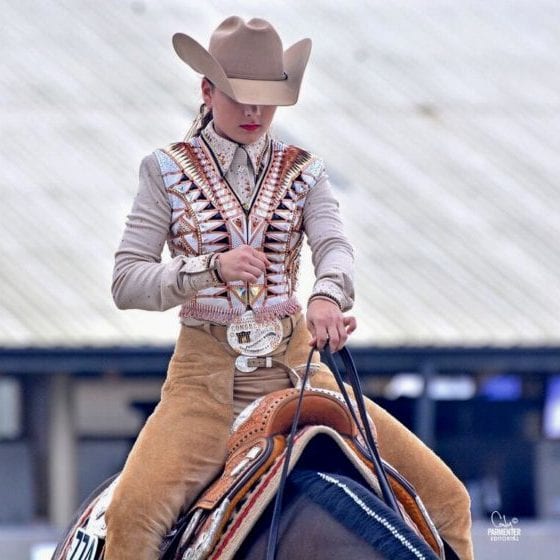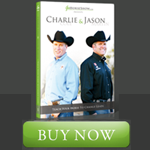When you hear the word style, you probably start thinking about your newest pair of Kimes Ranch Jeans or your new-to-you bolero set with all the fringe, but there’s more to your riding style than just what meets the eye.
Specifically, understanding what learning styles are and finding your learning style can be an essential part of your show ring success. Many coaches and trainers teach the way that they were taught, which makes sense, but doesn’t always work for all riders. Similarly, if as a rider you gain insight on how you learn best, you can take on more ownership of your progress.
The phrase ‘learning style’ refers to how an individual processes, organizes, interprets, uses and recalls information. The idea of learning styles is based on the observation that people differ in how they learn, and the concept of learning styles first became widespread in the United States in the 1970s.
You might compare this to theories about core personality types or business/leadership styles. Read on for an overview of one method of learning techniques and why learning styles are a must-have tool to add to your training toolbox.
What are learning styles for riders?
Researchers Peter Honey and Alan Mumford have identified four styles of learning that correspond well to riding because their work suggests that while we might have a preferred or most common mode for education, it is also important to match the learning style to the task you are completing.
You can think of the learning styles as stages of the training process as well as a preferred way of learning. Your “style” usually matches up with the part of the training and showing process that you most enjoy, too.
The learning styles are Activist, Reflector, Theorist and Pragmatist. As a rider, you’ll probably identify strongly with one to two of these styles, but it is critical to note that in learning, we often move through and use all of these styles. Below, we’ll summarize each method and how the technique relates to riding.
The Activist
Activists like action; they are the riders who learn by doing. Instead of carefully watching a demonstration of how to complete a trail back-through, they’re going to connect ideas better by jumping in and trying it out.
You might be an activist if you:
-Enjoy new experiences
-Are generally flexible and open-minded when learning new things
-Act first, think later
-Get easily bored with the same training drills
Training tips for “Activist” Riders:
-Allow trial and error to happen – if it won’t be unsafe to muddle through a trail course without perfecting the individual components or even knowing the pattern first, go ahead and experiment
-Give your clients or yourself permission to dive in and make mistakes – activists tend to work things out as they go
-After trying something, create intentional ways to reflect and review – discuss what worked and outline critical points about what worked or didn’t work
-Seek variety in drills – the newness of trying different techniques will be helpful for activists
The Reflector
Reflectors, on the other hand, enjoy observing. They are the riders who learn best by sitting on the rail, carefully and quietly watching other riders at work. They are generally more cautious in their approach and like to have a well-mapped out understanding of what they are going to do before they try it.
You might be a reflector if you:
-Spend a lot of time listening to and watching trainers and barn-mates; you tend to like visual examples
-Like to be able to do something correctly, even the first time you try it
-Gather a lot of information from listening, watching, and studying before feeling confident
Training tips for “Reflector” Riders:
-Don’t be impatient with clients or yourself – a reflector isn’t going to want to take big risks or leaps or go first in trying new drills
-Be organized and timely at home and shows so there is time for the preparation a reflector likes – they are easily stressed by feeling rushed
-Seek out examples, video or watching others, before trying something
-Remind clients or yourself not to overthink
The Theorist
Theorists are all about the why; they need to know the rhyme and reason behind things before truly learning something effectively. This is the rider that can’t just be told “put your right calf on” and do it, rather, a theorist will cock their head to the side and ask “why?”
You might be a theorist if you:
-Like to know the rules and guidelines that govern an event or the history and theories of a discipline before competing
-Enjoy getting into discussions about training philosophies and approaches
-Benefit from having a clearly outlined plan, but have the opportunity to question and investigate the rationale behind it
Training tips for “Theorist” Riders:
-Get (or provide) resources such as rulebooks and training articles/videos
-If you’re the trainer of a “Theorist,” explain the inner workings and purpose behind a drill before asking clients to try it. If you are the theorist, communicate with your trainer that you appreciate understanding the mechanics of a technique
-Engage in conversations about theories and different approaches to things, for example, different approaches to executing lead changes correctly
-Allow time for researching and trying out different strategies
The Pragmatist
Similar to Activists, pragmatists are keen to get to work. Pragmatists enjoy getting to work, and once they’ve identified something to try, want to execute it right away. These are the riders that are problem and solution-oriented; if they are told “pull your right rein,” the pragmatist does so immediately without needing any discussion.
You might be a pragmatist if you:
-Thrive on direct and immediate feedback on your riding
-You often think about cause/effect of different ways of doing things
-When problems arise, you move immediately into trying out solutions
Training tips for “Pragmatist” Riders:
-Outline how practice rides are directly connected to a specific goal (e.g., two trips per week with no irons will build core strength to enable you to compete in equitation by ___ show)
-Avoid lengthy theoretical discussions, which can feel frustrating
-When reflecting on show ring performance, identify weaknesses and pinpoint how this will be addressed in the future
-Don’t pressure clients or yourself to try new things if there is no need (e.g., if a showmanship backing drill isn’t broke, don’t fix it)
Which of these learning styles best fits you? Does your horse or trainer match any of these styles? Let us know in the comments.
About the Author- A native Michigander, Rachel Kooiker is a lover of horses who loves to write. She competes in all-around Amateur events with her APHA gelding, Hoos Real. She graduated from Grand Valley State University with a BA in English and Psychology and an MA in Curriculum & Instruction. She is an Instructional Technology Specialist in Grand Rapids, MI where she and her husband Drew operate Kooiker Show Horses, where they raise select Halter and Performance prospects.









